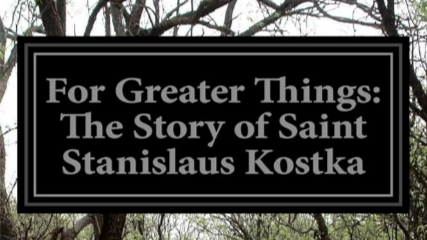Chapter IV-For Greater Things
byChapter IV – For Greater Things begins with a vivid recounting of Stanislaus Kostka’s long journey from Poland to Vienna, a voyage that serves not just as a physical relocation but as a formative experience for the young saint. At nearly fourteen, Stanislaus rides alongside his brother Paul, both accompanied by their tutor, John Bilinski, and several servants. The route, spanning over six hundred miles, unfolds as a blend of natural beauty, hardship, and quiet encounters. They cross sweeping plains, ford mountain streams, and camp beneath starlit skies along the Carpathians, often surrounded by landscapes both daunting and majestic. Each mile they travel offers Stanislaus an opportunity not just to observe but to engage with the world around him through a lens shaped by faith. Rather than embracing the aristocratic detachment often expected of noble sons, he opens his heart to everyone he meets. His interactions show a rare blend of nobility and humility, and his maturity sets him apart.
On the road, Stanislaus frequently interacts with peasants and travelers, offering encouragement, comfort, and even his own mount to those exhausted by the road. This gesture, while seemingly small, reflects a spiritual instinct far beyond his years. He sees no hierarchy in souls—only shared dignity and suffering. These moments reveal the early fruit of his Jesuit influence and his profound interior life. As they pass through villages and open countryside, his conversations often turn to eternity, showing an earnest yearning for heavenly union more than worldly approval. Even hardened men such as charcoal burners and frontiersmen are left stirred by the clarity and purity of his faith. His quiet conversations leave behind not just politeness, but a whisper of something greater—of values not driven by pride, but by compassion and divine longing.
Though Paul, the elder brother, enjoys the ride for its adventure and novelty, Stanislaus views it as a pilgrimage of sorts. Every hardship becomes a reminder of Christ’s own path, and every kindness extended becomes a small act of devotion. In towns where inns are scarce, and where the cold bites through their travel-worn coats, Stanislaus does not complain. Instead, he prays silently, giving thanks for the chance to suffer even a little. His conduct impresses not only strangers but even some of the servants, who witness his quiet endurance and generosity firsthand. Unlike Paul, who often remains aloof or impatient, Stanislaus finds a sense of kinship with those of lower status, recognizing in their eyes a hunger for hope. This compassion never calls attention to itself. It simply radiates through his actions, offering a glimpse of sanctity taking root in everyday choices.
As they near Vienna, the bustling roads fill with traders, pilgrims, and students, each pursuing their own destination. Stanislaus watches them all with calm wonder, not out of curiosity alone but with the eyes of someone who sees divine fingerprints in every life. Where others measure progress in miles, he measures it in moments of grace. His reflections deepen with each passing day, and while he is still a boy in age, his spiritual insight makes him a guide in spirit. This leg of his life journey shapes not just his worldview but the people around him. Without preaching, without position, Stanislaus manages to draw others closer to God. His message isn’t in sermons—it’s in sacrifice, kindness, and a presence that comforts and challenges all at once.
The journey from Poland to Vienna becomes a metaphor for a deeper transition—from comfort to purpose, from privilege to service. Stanislaus’s capacity to transform discomfort into prayer, and unfamiliar paths into sacred ground, testifies to the power of inward grace. What began as a noble family’s educational pursuit becomes the crucible in which a saint is quietly forged. Every footfall on the worn roads of Europe brings him closer not only to the Jesuit college in Vienna but also to the vocation that would define his short, luminous life. Through this journey, readers witness that the making of a saint often begins in ordinary places—with open eyes, a generous heart, and a soul willing to walk wherever God may lead.

